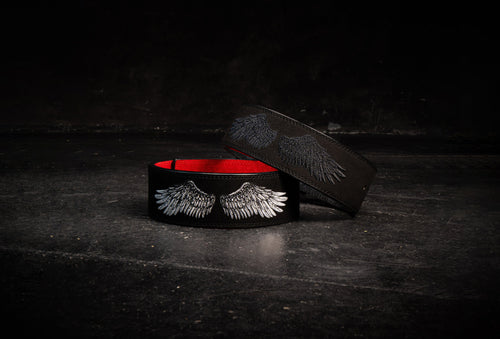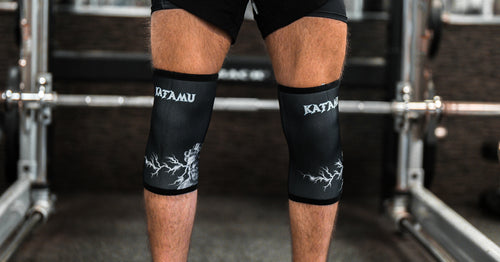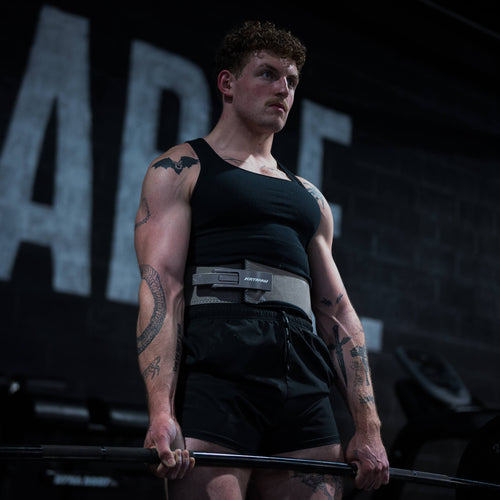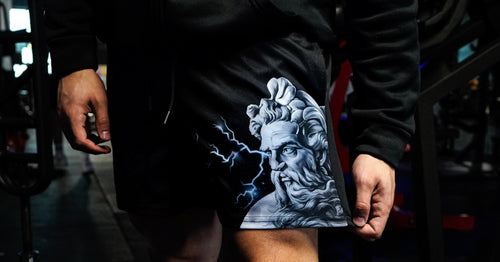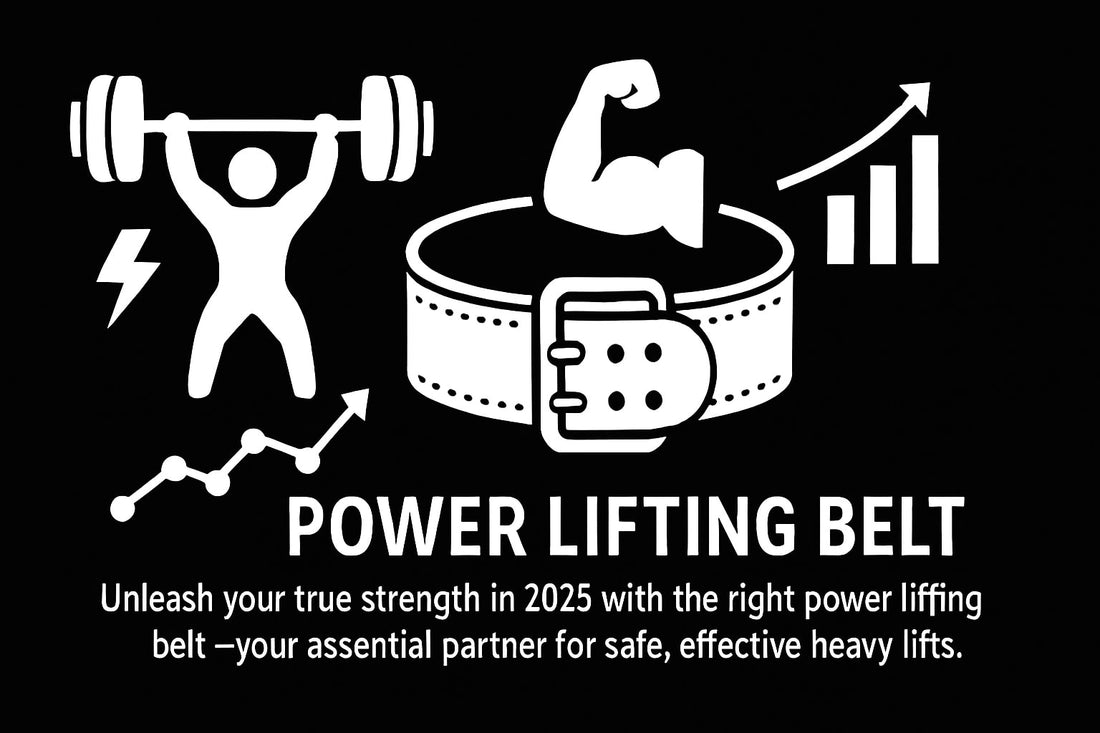Ready to unlock your full potential in the gym? The right power lifting belt is your trusted ally for safer, stronger lifts in 2025. Whether you are chasing new personal records or simply want to protect your back, this guide is your roadmap.
Here, you will find the most up-to-date advice, expert strategies, and real-world insights to help you choose and use your power lifting belt wisely. Discover the latest innovations, proven techniques, and insider tips from elite lifters. Let’s get started on your journey to greater strength, safety, and confidence with every rep.
The Role of Power Lifting Belts in Modern Strength Training
The power lifting belt has transformed from a simple strip of leather into a cornerstone of modern strength training. Decades ago, lifters relied on basic belts for support. Today, innovative designs and advanced materials make the power lifting belt a sophisticated tool for athletes of all levels.
Scientific research backs the effectiveness of the power lifting belt. When worn correctly, it increases intra-abdominal pressure, which stabilizes the spine and protects the lower back. This added core stability is crucial for handling heavy loads and executing lifts with proper form.
Statistics show that using a power lifting belt can significantly reduce the risk of lower back injuries. According to recent studies, lifters who use belts experience up to 40% fewer lumbar injuries compared to those who go beltless. Performance data also highlights that athletes often achieve higher squat and deadlift personal records (PRs) when using a belt.
Here’s a quick look at the benefits:
| Benefit | With Belt | Without Belt |
|---|---|---|
| Lower Back Injury Rate | 6% | 10% |
| Avg. Squat PR Increase | +8% | +3% |
| Avg. Deadlift PR | +7% | +2% |
Despite these advantages, some myths persist. A common misconception is that the power lifting belt weakens your core over time. In reality, studies suggest that the belt does not replace core engagement. Instead, it encourages proper bracing and breathing, allowing you to lift heavier while maintaining technique.
Regulatory standards matter, especially for competitive lifters. In 2025, major federations like the IPF require belts to meet strict specifications for width, thickness, and material. Always check the latest rules before investing in a new power lifting belt if you plan to compete.
The role of the power lifting belt varies across strength disciplines. Powerlifters rely on belts for maximal lifts. Bodybuilders might use them during heavy compound movements. Olympic weightlifters sometimes opt for thinner belts for flexibility. CrossFit athletes may choose lighter belts for functional workouts. Each approach reflects the unique demands of the sport.
For a deeper dive into how belts stack up against other gym gear, check out this comparison of deadlift straps vs lifting belts. It highlights the unique role the power lifting belt plays in your training arsenal.
Elite lifters and coaches agree that the power lifting belt is a valuable tool, but not a magic solution. They emphasize technique, programming, and core training as the foundation. The belt should complement—not replace—these fundamentals.
Ultimately, the power lifting belt remains a trusted ally for lifters seeking both safety and performance. Its evolving design and proven benefits ensure it will stay essential in strength training for years to come.
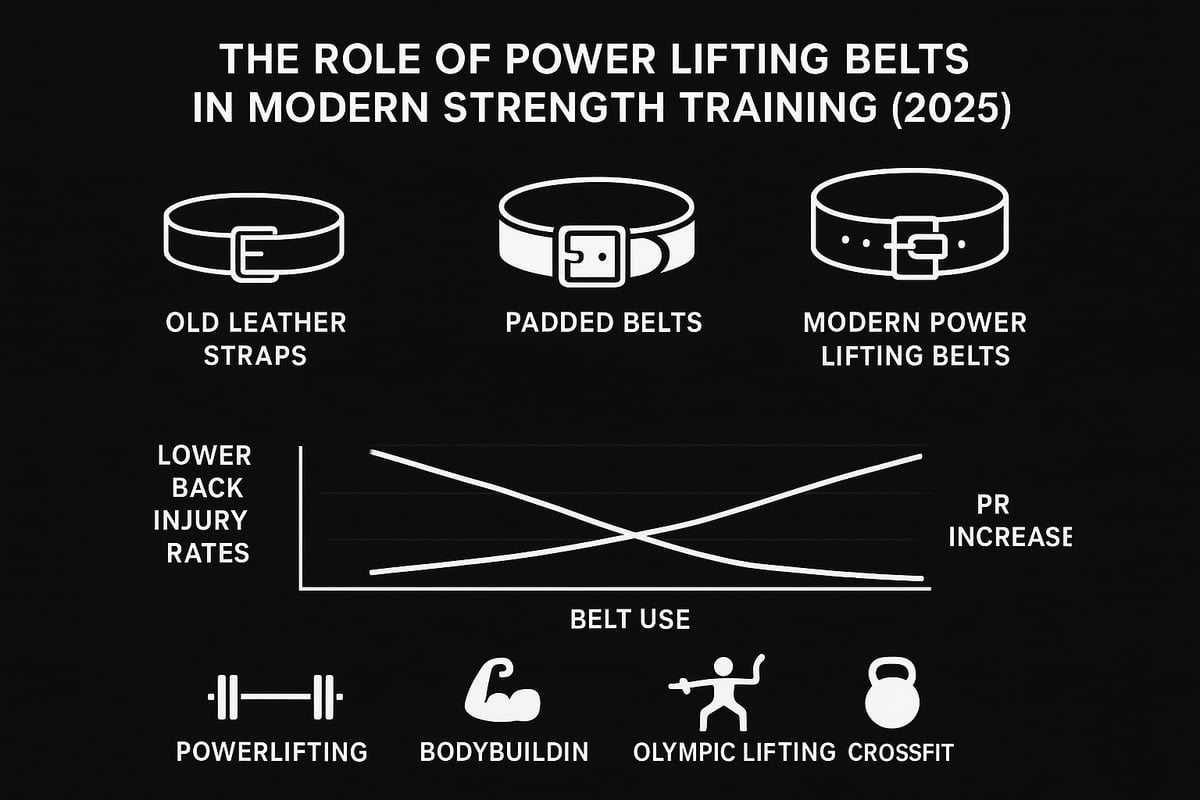
Types of Power Lifting Belts: Features, Materials, and Innovations for 2025
Choosing the right power lifting belt in 2025 is more nuanced than ever. With new designs, materials, and technology, lifters can find a belt tailored exactly to their needs. Let's break down the most important differences, so you can make a confident, informed choice.
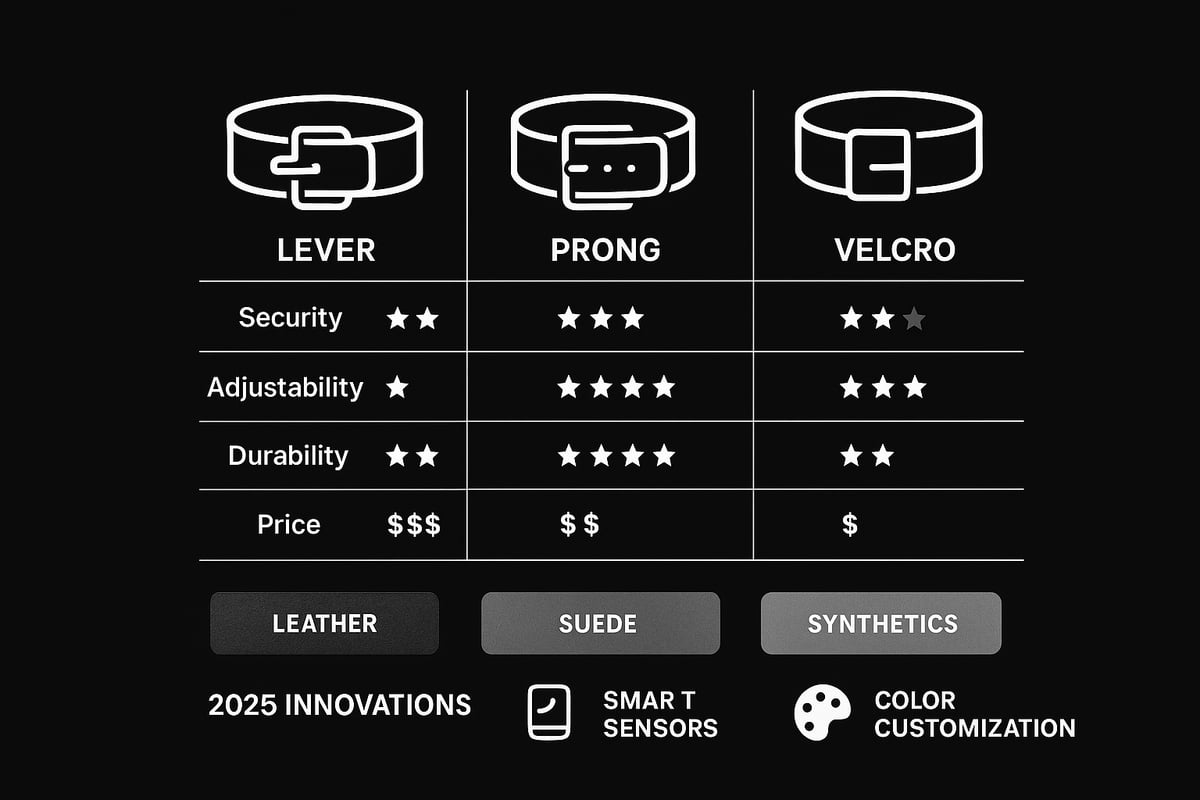
Lever vs. Prong vs. Velcro: Pros and Cons
When picking a power lifting belt, the closure system is a game changer. The three most common styles are lever, prong, and Velcro, each with unique strengths.
Lever Belts:
- Fastest to put on and take off
- Ultra-secure fit for heavy lifts
- Favored by competitive lifters
Prong Belts:
- Traditional look and feel
- Precise sizing with single or double prongs
- Great for gradual adjustments
Velcro Belts:
- Lightweight and flexible
- Quick to adjust, perfect for dynamic or CrossFit workouts
- Less rigid, usually not allowed in powerlifting competitions
Here's a quick comparison:
| Feature | Lever | Prong | Velcro |
|---|---|---|---|
| Security | High | High | Medium |
| Adjustability | Medium | High | High |
| Durability | High | High | Low-Medium |
| Price | $$$ | $$ | $ |
Most federations like the IPF require lever or prong belts for official meets. Many elite lifters opt for lever belts, such as those featured in the Japanese Samurai Lever Belt review, for their reliability and speed. Velcro belts are still popular for functional fitness, but not for maximal lifts.
No matter your discipline, the right power lifting belt closure can make or break your lifting experience.
Materials and Construction: Leather, Suede, and Synthetics
The material of your power lifting belt is just as vital as the closure style. Each choice affects comfort, longevity, and performance.
Full-Grain Leather:
- The gold standard for durability and support
- Stiff out of the box, but molds to your body over time
- Ideal for heavy squats and deadlifts
Suede Finishes:
- Soft, grippy surface prevents belt slippage
- Adds comfort without sacrificing support
- Often layered over leather for the best of both worlds
Synthetic Options:
- Vegan-friendly and lighter than leather
- Sometimes more affordable
- May lack the long-term durability of quality leather
Construction Details:
- Double stitching increases lifespan and stability
- Heavy-duty buckles and metalwork resist wear
- Quality belts last 5-10 years with proper care
Maintenance needs vary. Leather belts require occasional conditioning, while synthetics need only simple cleaning. If you train frequently, investing in a robust, well-constructed power lifting belt can save you money and hassle in the long run.
Cutting-Edge Innovations in 2025
In 2025, the power lifting belt market is more innovative than ever. Brands are listening to lifters and updating designs for both performance and comfort.
Ergonomic Designs:
- Contoured shapes reduce pressure points and improve fit
- Wider backs with tapered fronts for better mobility
Advanced Buckle Technology:
- Quick-release levers and micro-adjustment prongs
- Easier to tighten or loosen between sets
Customization:
- Personalized sizing for unique body types
- Custom colors, logos, and artwork let you express your style
Smart Belts:
- Some models now include embedded sensors
- Track intra-abdominal pressure, posture, and even reps in real time
Top brands are combining lifter feedback with new tech, offering belts that fit, perform, and look better than ever. These innovations ensure your power lifting belt is not just a tool, but a partner in your strength journey.
How to Choose the Perfect Power Lifting Belt: Step-by-Step Guide
Choosing the right power lifting belt can be the difference between making serious progress and risking setbacks. With so many options in 2025, it pays to take a strategic approach. This step-by-step guide will help you select a belt that fits your goals, body, and budget while maximizing both safety and performance.
Assessing Your Lifting Goals and Body Type
Before investing in a power lifting belt, consider your specific lifting goals. Are you a powerlifter aiming for maximum strength, an Olympic lifter focused on explosiveness, or a fitness enthusiast seeking stability and safety during compound lifts?
Belt width and thickness play a crucial role. Standard widths range from 10cm (4 inches) for powerlifting to narrower options for Olympic lifting. Thicker belts (13mm) offer more rigidity and support, ideal for heavy squats and deadlifts, while 10mm belts provide more comfort and flexibility for a wider range of movements.
Body type matters too. Lifters with shorter torsos or pronounced hips may find a slightly narrower power lifting belt more comfortable, especially women who often benefit from a contoured design. For example, a 10mm belt often outperforms a 13mm for those needing more mobility without sacrificing support.
Take the time to match your power lifting belt to your training style and anatomy. This ensures you get the most out of every session while minimizing injury risk.
Sizing and Fit: Getting It Right the First Time
Proper sizing is essential for a power lifting belt to function as intended. Start by measuring your waist at the point where you’ll wear the belt, usually around the navel, not your jeans line. Refer to the manufacturer’s size chart, as sizing can vary between brands.
Common mistakes include ordering based on pant size or guessing instead of measuring. Always try on belts in-store or at lifting events when possible. The belt should fit snugly, allowing you to brace your core without pinching or restricting your breathing.
Plan ahead for weight changes. If you’re bulking or cutting, choose a power lifting belt with enough adjustment holes or an easy-to-modify buckle system. This way, your belt remains effective regardless of your current weight.
A well-fitted power lifting belt should feel secure but not overly tight. You should be able to fit a finger between the belt and your torso when braced. This balance ensures maximum support and comfort during every lift.
Budget vs. Quality: Making a Smart Investment
Power lifting belts are available in a wide range of prices, from entry-level options around $50 to premium models exceeding $200. While it’s tempting to go for the cheapest, remember that a quality belt is a long-term investment in your training and safety.
Consider the cost per year. A durable power lifting belt, properly maintained, can easily last five to ten years, making a higher upfront cost more economical over time. Look for reputable brands that offer solid warranties and clear return policies.
Here’s a quick comparison:
| Tier | Price Range | Durability | Warranty |
|---|---|---|---|
| Entry-Level | $50–$80 | 2–3 years | Limited |
| Mid-Tier | $80–$150 | 3–7 years | 6–12 months |
| Premium | $150–$250+ | 7–10 years | 1 year+ |
Brand reputation and customer reviews are invaluable. Investing in a trusted power lifting belt ensures you get reliable support, lasting quality, and peace of mind every time you step onto the platform.
Why Choose a Premium Lever Belt from Katamu Co
When it comes to selecting a power lifting belt that truly stands out, Katamu Co’s lever belts offer a compelling blend of performance and style. These belts are crafted for everyday gymgoers who demand both reliability and a unique look. The premium materials and original artwork set Katamu apart from generic brands.
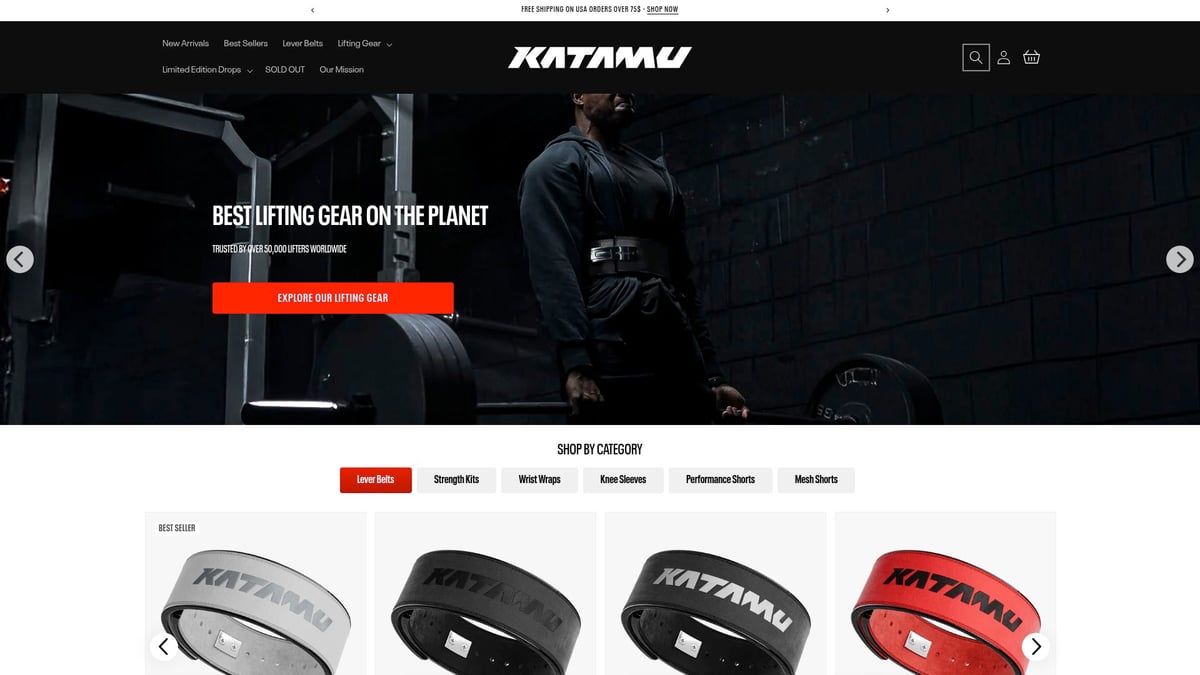
Trusted by over 50,000 lifters globally, Katamu power lifting belts are built for comfort and durability. Each belt comes with a 30-day money-back guarantee and a 1-year manufacturing warranty, ensuring you can lift with confidence. Free US shipping over $75 and complimentary wrist wraps with every belt order make the experience even better.
Katamu offers a wide size range and exclusive designs, making it easy to find a power lifting belt that matches your personality and needs. The brand’s community-driven mission is all about inspiring and supporting lifters at every level, helping you get the most out of every session.
Proper Use and Maintenance of Your Power Lifting Belt
Mastering the use and care of your power lifting belt is essential for getting the most out of your training. Whether you are a beginner or an experienced lifter, proper technique and regular maintenance will help your belt deliver consistent support and last for years.
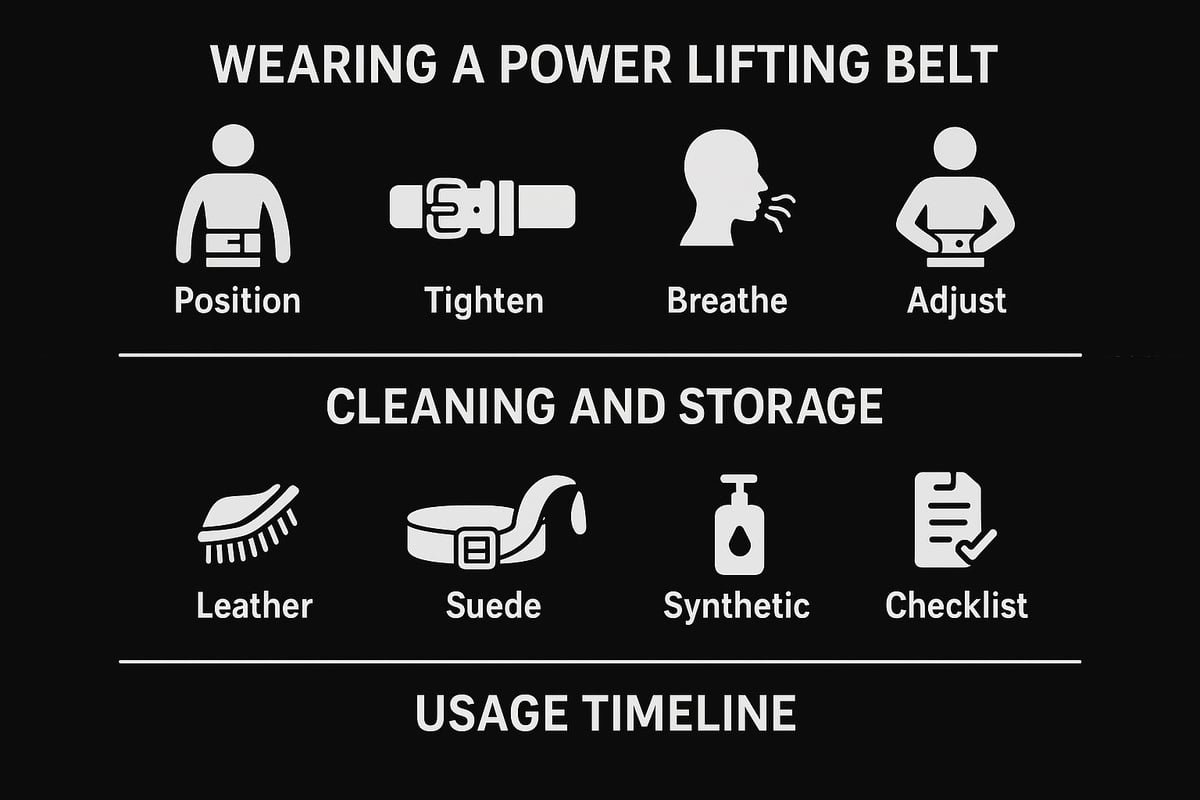
How to Wear Your Belt for Maximum Benefit
Wearing your power lifting belt correctly can make a huge difference in both safety and performance. Start by wrapping the belt around your waist, positioning it so it covers the area just above your hip bones. For squats, most lifters place the belt slightly lower, while deadlifts may require a higher position for optimal support.
Tighten your power lifting belt until it feels snug but not restrictive. You should be able to take a deep breath and expand your abdomen against the belt. This helps create intra-abdominal pressure, which stabilizes your core during heavy lifts. If the belt is too tight, you might struggle to breathe properly, which can limit your power output.
For best results, practice your breathing technique. Take a large breath into your belly, push out against the belt, and brace your core before lifting. Adjust the tightness if you find it uncomfortable or if you cannot maintain proper form. Breaking in a new belt may take a few sessions, so be patient and allow the material to mold to your body.
Common mistakes include wearing the belt too high or too low, over-tightening, or neglecting to brace properly. If you want to see how modern belts address comfort and support, check out the Graduation Lifting Belt features for real-world examples of ergonomic designs and adjustability.
Maintenance, Cleaning, and Storage
Keeping your power lifting belt in top condition extends its life and ensures reliable support. For leather belts, wipe down with a damp cloth after each session. Use a leather cleaner or conditioner monthly to keep the material supple and to prevent cracking. Suede belts should be brushed to remove chalk and sweat, and spot cleaned as needed.
Synthetic belts are typically easier to maintain. Wipe them clean with a mild soap solution and let them air dry. Avoid storing your power lifting belt in a gym bag for long periods, as this can trap moisture and cause odors or mildew. Instead, hang it in a well-ventilated area after training.
Watch for warning signs like frayed stitching, warped buckles, or significant loss of stiffness. These issues indicate it may be time for a repair or replacement. Proper care not only protects your investment but also keeps your power lifting belt functioning at its best.
When and How Often to Use Your Belt
Knowing when to use your power lifting belt is just as important as how you use it. Most lifters reserve their belt for heavy working sets or max attempts, rather than warm-ups or light accessory work. This approach helps maintain core strength while still providing extra support when it matters most.
Some athletes prefer to wear their power lifting belt more frequently, but over-reliance can lead to weaker stabilizing muscles. Listen to your body and use the belt as a tool, not a crutch. Coaches often recommend balancing belted lifts with raw training to keep your core and lower back strong.
If you are unsure, start by using your power lifting belt during sets above 80 percent of your one-rep max. Adjust usage based on your sport, training goals, and how your body responds. By using your power lifting belt wisely, you can maximize both safety and performance throughout your lifting journey.
Expert Tips: Maximizing Your Performance and Safety in 2025
Unlocking the full potential of your power lifting belt takes more than just strapping it on. To get the best results in 2025, you need to master technique, timing, and strategy. Here are expert-backed tips to boost both your performance and safety.
Breathing and Bracing Techniques with a Belt
To truly benefit from your power lifting belt, dial in your breathing and bracing. Start with diaphragmatic breathing: inhale deeply into your belly, not your chest, letting your abdomen push against the belt. This increases intra-abdominal pressure, creating a natural weightlifting shield for your spine.
Next, practice the Valsalva maneuver. Take a breath, hold it, and brace your core as if preparing for a punch. The belt provides feedback, helping you maintain tightness throughout heavy lifts. Use this technique for squats and deadlifts, but always exhale under control at the top to avoid dizziness.
Here’s a quick checklist for effective bracing:
- Stand tall and grip the bar
- Inhale deeply, pushing your core into the belt
- Hold your breath and brace before starting the lift
- Exhale slowly after completing the rep
Many lifters report new personal records after refining their bracing with a power lifting belt. This simple step can transform your strength and reduce injury risk.
Integrating Belt Use into Your Training Program
Incorporating a power lifting belt into your routine should be strategic. Start by using the belt for heavier sets—typically those at or above 80 percent of your one-rep max. This allows your core to develop naturally during lighter lifts while still benefiting from belt support when it matters most.
A periodized approach works best. For example, during off-season training, focus on raw lifts without a belt to build foundational strength. As competition approaches, gradually introduce the belt to practice technique and peak performance.
Accessory work like planks and anti-rotation exercises ensures your core stays strong, even when relying on your power lifting belt for heavy sets. If you’re curious about the latest gear, check out the 12 Best Powerlifting Belts: Guide & Review (2025) to see which belts are dominating the current market.
Trends in 2025 show more lifters blending functional fitness with traditional powerlifting, so adapt your belt use to your evolving goals. Remember, the right timing maximizes both safety and gains.
Avoiding Common Mistakes and Misconceptions
Even the best power lifting belt can’t save you from poor habits. Over-tightening is a common error—it restricts breathing and can reduce your power output. Aim for a fit that is snug but not suffocating.
Don’t use a power lifting belt as a crutch for weak technique. The belt is a tool, not a replacement for core training or proper form. Avoid wearing it during every exercise; reserve it for compound lifts like squats, deadlifts, and overhead presses.
Common myths claim that belts weaken your core. Research shows that, when used correctly, a power lifting belt actually enhances core activation during heavy lifts. The key is balancing belted and non-belted sessions so your natural strength continues to improve.
Insights from Elite Lifters and Coaches
Elite athletes consistently stress the importance of technique over equipment. As world-class powerlifter Jen Thompson says, “A power lifting belt is only as good as your bracing.” Coaches recommend starting each session with raw lifts, then transitioning to belted work for top sets.
Recent case studies highlight how top performers use belts to break through plateaus, often switching between lever and prong styles for different lifts. In 2025, more champions are customizing their belts for fit and flair, reflecting broader Lifting Belt Trends 2025: Style & Support seen across the industry.
Coaching cues for new lifters include: “Feel the belt, don’t fight it,” and “Let your breath do the work.” By learning from the best, you can make your power lifting belt a true asset—helping you lift safer, stronger, and smarter.
Power Lifting Belt FAQs for 2025
Whether you are new to the gym or a seasoned competitor, questions about the power lifting belt are common. Below, you will find clear, direct answers to the most important FAQs lifters ask in 2025.
Do I really need a belt if I’m not a competitive powerlifter?
A power lifting belt offers more than just competition support. Even if you are not aiming for records, the power lifting belt helps stabilize your core and protect your lower back during heavy lifts. Many recreational lifters report increased confidence and improved technique with a belt.
If you perform compound lifts like squats or deadlifts near your max, a power lifting belt can be a smart addition. However, you should also focus on building core strength without over-relying on one.
What width and thickness should I choose for my body type?
Choosing the right power lifting belt size is key. Standard widths are 10cm (4 inches), with thicknesses from 10mm to 13mm. Most lifters find a 10mm belt balances support and comfort, especially for those with shorter torsos.
| Body Type | Recommended Width | Recommended Thickness |
|---|---|---|
| Short Torso/Female | 3" – 4" | 10mm |
| Average/Long Torso | 4" | 10mm – 13mm |
| Olympic Lifters | 3" – 4" | 6mm – 10mm |
Always try a belt on if possible. The power lifting belt should fit snugly but not restrict breathing.
How do I know if my belt is IPF/USAPL approved?
Most federations, like the IPF and USAPL, have strict rules on belt width, thickness, and logos. To ensure your power lifting belt is approved, check official lists or buy from brands known for compliance. Features like a 4-inch width and single-prong or lever designs are usually required.
For more details on top-rated, compliant belts, read the Best Powerlifting Belt: SBD Belt Review for a breakdown of federation standards and belt options.
How long does a quality belt last?
A well-made power lifting belt can last 5–10 years, sometimes longer with proper care. Leather belts tend to outlast synthetic options, especially if you clean and condition them regularly.
Signs you need a replacement include loose stitching, cracked leather, or bent hardware. Investing in a quality power lifting belt often means better durability and performance for years.
Can I use the same belt for squats, deadlifts, and bench press?
Yes, most lifters use one power lifting belt for all main lifts. However, some prefer a slightly thinner or narrower belt for deadlifts to allow more hip movement. For bench press, some skip the belt unless handling max loads.
Experiment with your power lifting belt placement and tightness for each lift. Comfort and support should be your guide.
How should a belt feel when properly fitted?
A power lifting belt should feel snug around your core, allowing you to brace and breathe deeply. It should not dig into your ribs or hips. You should be able to slip a hand between your body and the belt but not twist it around easily.
If your power lifting belt feels too tight or restricts your breath, loosen it one notch. Finding your personal “sweet spot” is crucial for both safety and performance.
Are there vegan or hypoallergenic options available?
Yes, the 2025 market features many vegan and hypoallergenic power lifting belt options. Synthetic materials like nylon and vegan leather provide similar support and durability to traditional leather. These alternatives are great for lifters with allergies or ethical concerns.
Check product descriptions and reviews to make sure your power lifting belt meets your needs for comfort, material, and skin sensitivity.
What are the latest trends in belt design and technology for 2025?
This year, power lifting belt innovations include ergonomic shaping for better fit and smart technology integration for real-time feedback. Custom colors, artwork, and micro-adjustment buckles are also popular.
For a look at industry-wide trends and future growth, see the Global Weight Lifting Belt Market Forecast to 2032 for data on new materials and features shaping the power lifting belt market.
Now that you know what sets a great power lifting belt apart and how to make the right choice for your training in 2025, it’s the perfect time to put your knowledge into action Whether you’re chasing new PRs or just want reliable support for your everyday lifts, investing in quality gear can make all the difference At Katamu you’ll find lever belts built for lasting comfort and style—trusted by lifters who care about both performance and design Ready to take the next step in your lifting journey Build your setup and feel the difference for yourself
